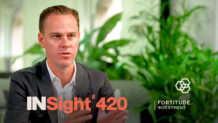The path to net-zero for infrastructure
The infrastructure sector is set to play a critical role in journey to net-zero carbon dioxide emissions. The globe will look to spend trillions over the coming decades to make it happen. Much of it will provide a tailwind for infrastructure investors. Despite concerns about the opposite, the path to net-zero emissions is a positive for infrastructure investing and driving future returns, according to many in the industry.
Global asset manager ClearBridge Investments has published a white paper that looks at a number of infrastructure sectors and how they will potentially affect climate change in the move to net-zero emissions over the next few years.
The report found the infrastructure sector to have the biggest opportunity to lead global industry in decarbonisation and the transition to net-zero emissions.
Nick Langley, ClearBridge Investments managing director and portfolio manager, says: “While moving toward net-zero is difficult, several pathways exist for infrastructure to lead. Each of these will require significant investment. Infrastructure companies and asset owners have historically been reducing carbon emissions from their assets, and this trend is set to accelerate as global policy support and social pressures grow.”
The white paper has highlighted the following sectors as beneficiaries of the ESG boom:
- Railroads – Set to be a big winner of the trend towards more responsible investing. This is owing primarily to railroads’ unique ability to reduce greenhouse gas emissions: rail is four times more fuel efficient than trucks. It is reported to produce 75% less fewer emissions.
- Aviation – Airports are another winner of the transition, despite being the home of aircraft. They produce lower emissions compared to other parts of the transport and property industry. Most airports will transition to renewable and solar energy, reducing emissions even more.
- Electric Utilities – Since the Paris Climate Agreement, emissions targets have been put in place forcing energy to be generated from renewables rather than fossil fuels. ClearBridge says “as a result, annual renewables generation capacity has doubled worldwide over the past decade, while utilities have been decommissioning thermal and nuclear plants.”
- Energy infrastructure – Large oil and gas pipelines will replace energy burnt from coal. Gas emissions in the electricity sector contributes around half the CO2 emissions of coal, driving gas replacing coal as a fuel to generate electricity.
ClearBridge says: “Companies are transitioning away from gas, with some piloting hydrogen and renewable gas, while others invest in wind and other renewables. We are sceptical about the ability of all pipeline companies to benefit from the transition to net-zero emissions. In addition, the development of the electric vehicle market is threatening the future of oil.”
But achieving this plan is no easy feat. There is a long list of challenges the electric utility sector faces including – maintaining stable grids, expiry of subsidy support and increased competition. ClearBridge says the biggest challenge facing rail “is the threat that regulators, responding to shippers’ complaints, will slow the pace of change.”
Roughly 70 per cent of Australia’s greenhouse gas emissions are either directly attributable to or influenced by infrastructure. So it makes sense that the infrastructure sector could be transformative in supporting Australia’s transition to net-zero-emissions.










